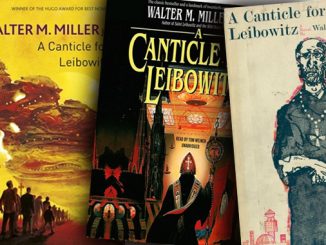

There is, in many quarters, increasing concern about the hyper-charged political correctness that has gripped our campuses and other forums of public conversation. Even great works of literature and philosophy—from Huckleberry Finn and Heart of Darkness to, believe it or not, Kant’s Critique of Pure Reason—are now regularly accompanied by “trigger warnings” that alert prospective readers to the racism, sexism, homophobia, or classism contained therein.
And popping up more and more at our colleges and universities are “safe spaces” where exquisitely sensitive students can retreat in the wake of jarring confrontations with points of view with which they don’t sympathize. My favorite example of this was at Brown University where school administrators provided retreat centers with play-doh, crayons, and videos of frolicking puppies to calm the nerves of their students even before a controversial debate commenced! Apparently even the prospect of public argument sent these students to an updated version of daycare. Of course a paradoxical concomitant of this exaggerated sensitivity to giving offense is a proclivity to aggressiveness and verbal violence; for once authentic debate has been ruled out of court, the only recourse contesting parties have is to some form of censorship or bullying.
There is obviously much that can and should be mocked in all of this, but I won’t go down that road. Instead, I would like to revisit a time when people knew how to have a public argument about the most hotly-contested matters. Though it might come as a surprise to many, I’m talking about the High Middle Ages, when the university system was born. And to illustrate the medieval method of disciplined conversation there is no better candidate than St. Thomas Aquinas. The principal means of teaching in the medieval university was not the classroom lecture, which became prominent only in the 19th century German system of education; rather, it was the quaestio disputata (disputed question), which was a lively, sometimes raucous, and very public intellectual exchange. Though the written texts of Aquinas can strike us today as a tad turgid, we have to recall that they are grounded in these disciplined but decidedly energetic conversations.
If we consult Aquinas’s masterpiece, the Summa theologiae, we find that he poses literally thousands of questions and that not even the most sacred issues are off the table, the best evidence of which is article three of question two of the first part of the Summa: “utrum Deus sit?” (whether there is a God). If a Dominican priest is permitted to ask even that question, everything is fair game; nothing is too dangerous to talk about. After stating the issue, Thomas then entertains a series of objections to the position that he will eventually take. In many cases, these represent a distillation of real counter-claims and queries that Aquinas would have heard during quaestiones disputatae.
But for our purposes, the point to emphasize is that Thomas presents these objections in their most convincing form, often stating them better and more pithily than their advocates could. In proof of this, we note that during the Enlightenment, rationalist philosophes would sometimes take Thomistic objections and use them to bolster their own anti-religious positions. To give just one example, consider Aquinas’s devastatingly convincing formulation of the argument from evil against the existence of God: “if one of two contraries were infinite, the other would be destroyed…but God is called the infinite good. Therefore, if God exists, there would be no evil.” Thomas indeed provides a telling response, but, as stated, that is a darn good argument. Might I suggest that it would help our public discourse immensely if all parties would be willing to formulate their opponents positions as respectfully and convincingly as possible.
Having articulated the objections, Thomas then offers his own magisterial resolution of the matter: “Respondeo dicendum quod… (I respond that it must be said…). One of the more regrettable marks of the postmodern mind is a tendency endlessly to postpone the answer to a question. Take a look at Jacques Derrida’s work for a master class in this technique. And sadly, many today, who want so desperately to avoid offending anyone, find refuge in just this sort of permanent irresolution. But Thomas knew what Chesterton knew, namely that an open mind is like an open mouth, that is, designed to close finally on something solid and nourishing. Finally, having offered his Respondeo, Aquinas returns to the objections and, in light of his resolution, answers them. It is notable that a typical Thomas technique is to find something right in the objector’s position and to use that to correct what he deems to be errant in it.
Throughout this process, in the objections, Respondeos, and answers to objections, Thomas draws on a wide range of sources: the Bible and the Church Fathers of course, but also the classical philosophers Aristotle, Plato, and Cicero, the Jewish scholar Moses Maimonides, and the Islamic masters Averroes, Avicenna, and Aviceberon. And he consistently invokes these figures with supreme respect, characterizing Aristotle, for example, as simply “the Philosopher” and referring to Maimonides as “Rabbi Moyses.” It is fair to say that, in substantial ways, Thomas Aquinas disagrees with all of these figures, and yet he is more than willing to listen to them, to engage them, to take their arguments seriously.
What this Thomistic method produces is, in its own way, a “safe space” for conversation, but it is a safe space for adults and not timorous children. Might I modestly suggest that it wouldn’t be a bad model for our present discussion of serious things.
If you value the news and views Catholic World Report provides, please consider donating to support our efforts. Your contribution will help us continue to make CWR available to all readers worldwide for free, without a subscription. Thank you for your generosity!
Click here for more information on donating to CWR. Click here to sign up for our newsletter.





